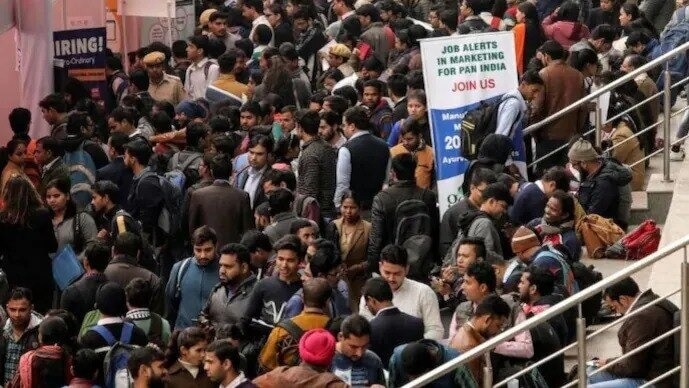Former G20 Sherpa and ex-CEO of NITI Aayog, Amitabh Kant, has a solution for India’s unemployment problem. The solution, he said, lies in the textiles and garments industry, which has the potential to create millions of manufacturing jobs.
“The answer to job creation in India lies in the textiles and garments industry. It has the potential to add millions of manufacturing jobs. Globally, 70% of the textiles and garments market comprises man-made fibres (MMF), and the rest 30% consists of cotton,” he said, adding that in India is it the other way round.
The lack of competitiveness at the raw material stage, high import duties on polyester and viscose, quality control orders (QCOs) which have superseded the anti-dumping duty have restricted the import of cheaper, raw materials.
“The raw materials for MMF are about 25% more expensive , as compared to our competitors. This cost disadvantage then gets compounded as we move down the value chain. To make our MMF industry globally competitive, all import duties must be brought down to zero and QCOs must be scrapped on priority. Making raw materials competitive is about unleashing millions of small enterprises, fuelling their growth, creating vast jobs and turning India into a global textile powerhouse,” he said.
According to the Ministry of Statistics and Programme Implementation (MoSPI), the Unemployment Rate (UR) among persons aged 15 years and above remained unchanged at 5.6 per cent in both May and June 2025.
The Labour Force Participation Rate (LFPR) in Current Weekly Status (CWS) for persons aged 15 years and above was 54.2 per cent in June 2025, slightly down from 54.8 per cent in May 2025. In rural areas, the LFPR stood at 56.1 per cent, while in urban areas it was 50.4 per cent during the same period.
For males aged 15 years and above, the LFPR in rural and urban areas was 78.1 per cent and 75.0 per cent respectively in June 2025. These figures show a marginal decline from 78.3 per cent in rural areas and 75.1 per cent in urban areas recorded in May 2025.
Among females aged 15 years and above in rural areas, the LFPR was 35.2 per cent in June 2025.
The Worker Population Ratio (WPR) in CWS for rural areas was 53.3 per cent for persons aged 15 years and above in June 2025. In urban areas, the WPR was 46.8 per cent, with the overall WPR at the national level recorded at 51.2 per cent, down from 51.7 per cent in May 2025.
For females aged 15 years and above, the WPR was 33.6 per cent in rural areas and 22.9 per cent in urban areas during June 2025. The overall female WPR at the country level was 30.2 per cent for the same age group.







